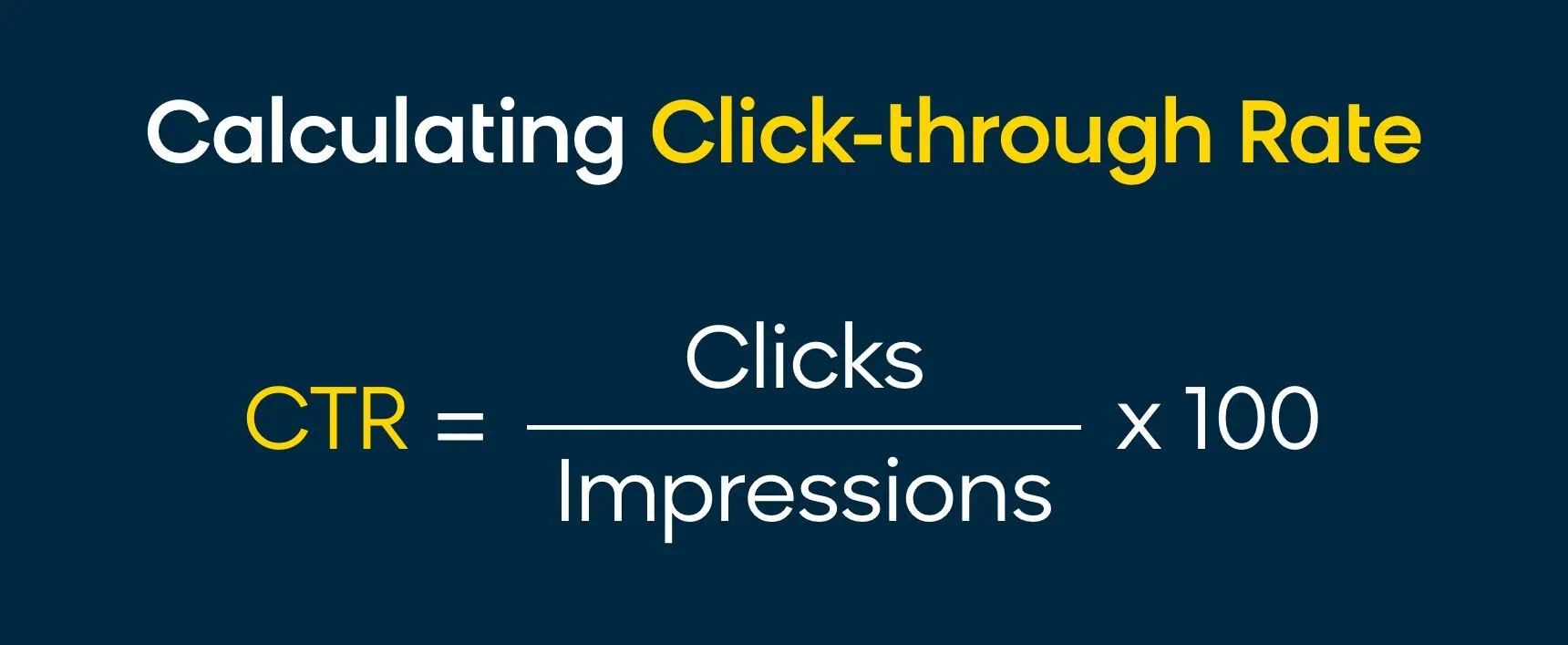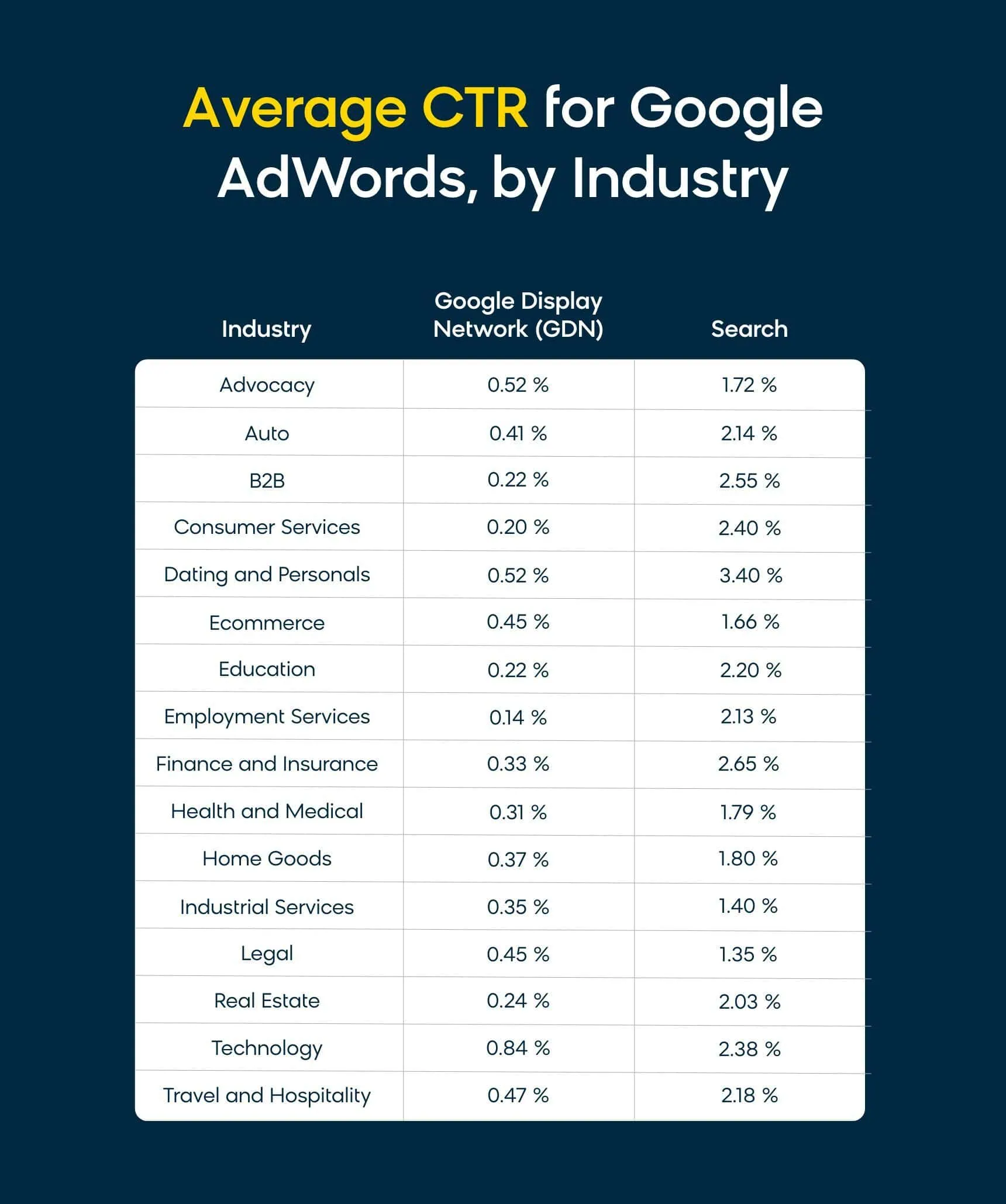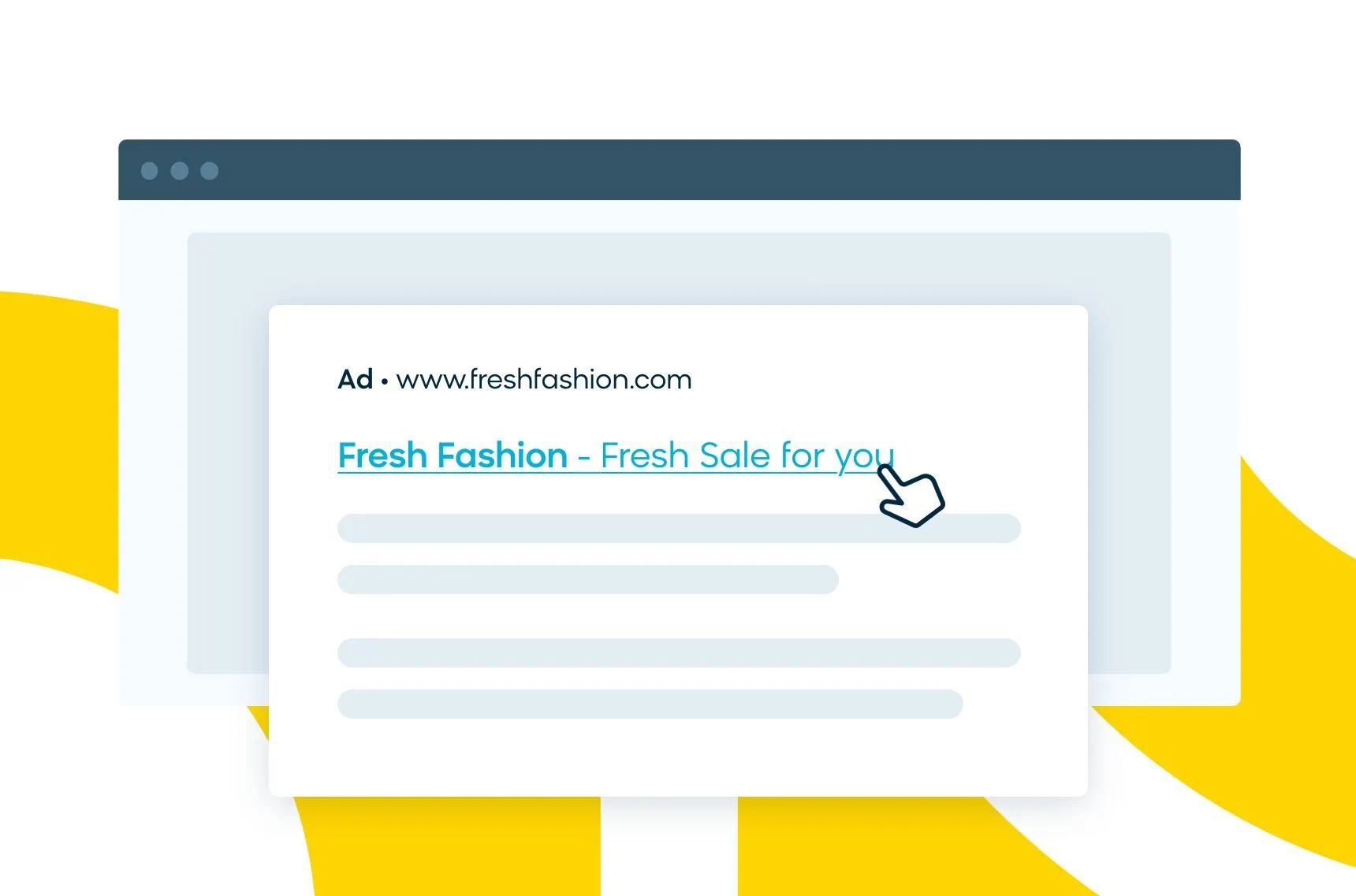ROI, PPC, CPL…the world of marketing measurement is no stranger to an abundance of acronyms. However, one metric you definitely don’t want to miss is click-through rate (CTR).
CTR is the number of clicks received per number of impressions. Simply put, it tells us the number of people that clicked on an ad relative to the total number of people that saw it.
Your CTR is an important metric because it indicates how many people are interested in your products and click on your ads to learn more or take some kind of action. Essentially, it’s incredibly useful for measuring campaign effectiveness.

CTR Benchmarks by Industry and Channel
What is considered a good CTR? That’s the million-dollar question. A good or high click-through rate varies depending on the type of industry you’re in, the marketing campaign you’re running, the type of ad or platform you use, and so on.
A click-through rate of 2% or above is considered good, but some industries may have higher or lower benchmarks. Ad formats may also play a factor in determining whether or not a CTR is “good.” For example, a CTR of 2% may be good for a display ad campaign, but for a search ad campaign, a 5-10% CTR may be the mark to hit.
Here are the latest industry benchmarks to help you understand what constitutes good performance in 2025:
- Email marketing: Average CTR ranges from 2-3% across industries, with higher rates in nonprofit (4.2%) and government sectors (3.8%) • Google Ads: Search ads typically see 3-5% CTR, while display ads average 0.5-1% • SMS marketing: Exceptional performance with average CTR of 19%, significantly higher than other channels • Social media: Facebook ads average 1.1% CTR, while LinkedIn sees rates around 0.4%
The benchmarking tool in Google Analytics allows you to compare your performance to that of your industry peers who share their data. This provides valuable context, enabling you to set meaningful CTR targets.
WordStream is another popular source and publishes an annual report on average CTR by industry based on data across its client base. Additionally, HubSpot publishes a report on the average CTR of email campaigns based on its customer data as well as CTR benchmark data for Google AdWords. Smart Insights also publishes a comprehensive report on average CTR for paid search, display, and social.
Why Click-Through Rate Matters
CTR is a key indicator of the effectiveness of your marketing campaign and the relevance of your message to your target audience. Here are the key reasons why CTR matters:
Higher Conversions and Revenue: A high CTR indicates that your ads or marketing message is relevant to your target audience, which can lead to higher conversions and more money for your business.
Improves Your Quality Score: Search engines place a premium on an excellent click-through rate. This trend makes sense because in the pay-per-click (PPC) business model, the more people click, the more money search engines make. Google Ads also uses CTR as a factor in determining your ad’s quality score, which can affect the cost per click and ad position of your PPC ads.
Reduces Your Ad Spend: A higher CTR can lead to a lower cost per click — this can lead to higher quality scores and can help you get more value out of your ad spend. Google’s Quality Score formula factors in expected CTR (or how your ad is expected to perform). The higher your expected CTR, the higher your Quality Score and ad rank, and the lower your cost per click and cost per action. Using a click prediction algorithm can help you accurately predict a customer’s motivation to click on an ad.
7 Proven Ways to Improve Your CTR
It’s clear that getting a higher CTR is important, but how exactly do you achieve this? Here are 7 proven strategies that work across different channels and audiences:
1. Craft Personalized Email Content
Email personalization is definitely the best way to improve your CTR. That’s because personalization allows you to offer your audience a curated experience with your brand that caters to them on an individual level. The more relevant and personalized your emails become, the better they perform with increases in open rates, CTR, conversions, and revenue gained.
Scottish craft beer company BrewDog applied personalization to its email marketing campaigns to great effect. By using personalized data on a test group of recipients, the company was able to improve its click-through rate by 15.6% and its conversion rate by 11.5%.
Focus on subject line optimization, mobile-responsive design, and clear value propositions. Implement dynamic content based on user behavior and preferences. Test different send times and frequency to find what works best for your audience.
2. Optimize Subject Lines and CTAs
Keep subject lines short and engaging. You have limited space here, so make sure your subject lines are catchy and get your audience to open the email (can’t have click-throughs without opens!). Your call to action (CTA) should be clear, concise, and actionable for greater engagement and conversions. Do you want to drive people to a landing page, schedule a call, or check out a demo? A good CTA will compel users to click through to learn more.
3. Use A/B Testing for Messaging
While A/B testing is something you should do for every channel, this is especially true for ads and email campaigns. Try using a variety of ad formats, devices, copy, and imagery to see what works. Refine your parameters and continuously optimize your campaigns based on your data and insights to make your ad spend more effective.
4. Leverage Strategic Audience Segmentation
Because different channels require different approaches, you need to provide value with every message you send. Share special or exclusive offers, time-sensitive deals, information on events, sneak peeks, and more to get them to click instead of marking your message as spam. Customer segmentation ensures you’re sending the right message to the right audience at the right time.
For SMS campaigns specifically, keep messages concise and action-oriented. The average CTR for SMS is 19%, which is much higher than email marketing and Facebook advertising, making proper segmentation even more critical.
5. Implement Predictive Retargeting
With retargeted ad campaigns for search and display, you’ll target users who have already interacted with your website or products. This is a great way to keep your brand top of mind and reengage your potential customers, especially if you personalize your retargeting strategy.
Key principles for paid search and display ads include: • Use targeted keywords. Keyword research can help you find the right keywords for your online ads that are relevant to your audience and business. • Keep your copy short and sweet. When it comes to online ads, you don’t have a lot of space to work with. Use your keyword(s) in the headline and use easy-to-understand language. • Test and optimize: Try using a variety of ad formats, devices, copy, and imagery to see what works.
Learn how home retailer 4Home created lookalike audiences for retargeting to boost CTR with its social ads and drive an impressive 800% increase in ROAS.
6. Time Your Campaigns Strategically
Timing plays a crucial role in CTR performance. Analyze when your audience is most active and likely to engage with your content. For email campaigns, test different send times and days of the week. For SMS, avoid early morning or late evening sends unless you have data showing your audience prefers these times. Use analytics to identify peak engagement windows for each channel and audience segment.
7. Monitor and Adjust Based on Performance Data
Regular monitoring and optimization are essential for maintaining high CTR in 2025. Set up automated reports to track performance across channels, and be prepared to make quick adjustments when you notice declining performance. Use data-driven insights to inform your optimization decisions rather than relying on assumptions.
A powerful way to boost CTR is to reach your visitors as they’re browsing your site through product recommendations and weblayers. Weblayers are personalized banners that can be used on specific pages to engage and convert a specific audience.
Weblayers have multiple uses and are generally good as call-to-action solutions. They tend to be used to: • Highlight important information that can change customers’ behavior, such as free shipping • Incentivize subscription to push notifications or newsletters • Gather information through surveys or update customer attributes • Create demand by showing how many people are buying/looking at a product.
How to Measure CTR Effectively
Measuring CTR effectively is crucial for understanding campaign performance and making data-driven optimizations. The basic CTR calculation is straightforward: divide total clicks by total impressions, then multiply by 100 for a percentage.
Key metrics to track alongside CTR include:
- Conversion rate from clicks
- Cost per click (CPC)
- Return on ad spend (ROAS)
- Quality Score (for paid search)
- Engagement rate and time on site
Establish a regular reporting cadence – weekly for active campaigns, monthly for established programs. Compare your performance against industry benchmarks and your own historical data to identify trends and opportunities. Use analytics dashboards to monitor real-time performance and set up automated alerts for significant changes in CTR.
Boost Your CTR With Bloomreach Engagement
If you want to effectively improve your click-through rates across all your channels, look no further than Bloomreach Engagement. By unifying all your customer data through a powerful customer data engine, Bloomreach Engagement makes it easy to automatically personalize your emails, SMS/MMS, ads, website, mobile app, and more — all in real time.
The real-time nature of the solution is key here, as this ensures you never miss the mark for your intended audience. Sending more relevant messages right when they’ll have the most impact will not only boost your CTR, but also conversions, ROAS, and customer lifetime value.
Just look at beauty and cosmetics brand Yves Rocher. In order to create a better shopping experience for both returning customers and first-time visitors, it turned to Bloomreach Engagement to serve personalized recommendations. Even if someone was anonymous, their browsing behavior would result in product recommendations that matched that behavior (which would then be further enhanced once they created a profile).
As a result of personalizing the on-site experience, Yves Rocher saw a 17.5x increase in the number of clicks on a personalized recommendation vs. a generic “top seller” recommendation.
It’s time to revamp your marketing strategy and focus on your CTR. Not sure where to start? Try creating an automated welcome email series to improve click-through rates among new customers.















